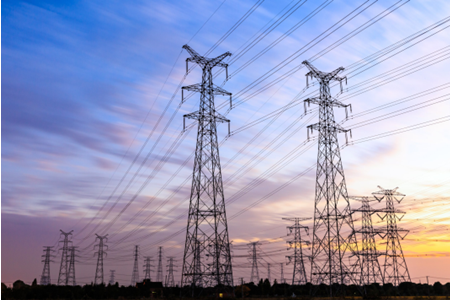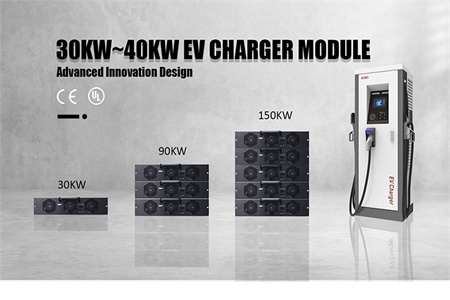In 2021, MIDA launched a 40kW liquid cooling module at the same end of hydropower. The design of this module is similar to the traditional air cooling module, with the front being the handle and the rear being the water terminal and electric terminal. When installing the module, you only need to push the module inside to be installed in place. When removing it, you only need to hold the handle to pull the module out of the plug box. At the same time, the water terminal adopts the design of “positioning self-closing”, which does not need to worry about leakage. When installing and removing the module, there is no need to remove the coolant in the liquid cooling circuit in advance, so that the maintenance time of the module is reduced from the traditional 2 hours to 5 minutes.
At the same time, MIDA also launched a 240kW integrated liquid cooled charging pile, the system adopts a dual-gun design, a single gun maximum output of 600A, which can overcharge passenger cars on 400V platform. Although the power is not very high, but this system has high reliability, very low noise, simple and light charging, it is very suitable for office area, community, hotel and other high-quality places deployment and use.
The domestic market demand for full liquid cold overcharge is late, but the trend is more fierce. The domestic demand is mainly from oems. OEems need to provide customers with better supercharging experience when launching their own high-end support high-power supercharging models. However, the current public charging infrastructure does not support liquid-cooled supercharging (the national standard is not perfect), so they can only play and build their own supercharging network.
This year, Geely launched the extreme krypton 001 based on the vast platform, equipped with a 100kWh battery pack, up to 400kW charging power. At the same time, it also launched the polar charging liquid-cooled supercharging pile. Geely became the pioneer of self-built liquid-cooled supercharging stations built by domestic oEMS.
In response to the needs of domestic oems, MIDA took the lead in launching a 40kW liquid cold electric power conversion module with IP67 protection level, including ACDC module and DCDC module, and launched an 800kW super high power split all-liquid cold energy storage charging system.
The shell of 40kW liquid-cooled electric energy conversion module is designed as die-cast aluminum, with excellent heat dissipation performance. The power protection level can reach IP67, with excellent explosion-proof, flame retardant and pressure resistance performance, which can be applied in various special or vehicle specification level application scenarios.
The 800kW full liquid cooled energy storage supercharging system adopts the separate warehouse design, which is composed of power distribution warehouse, power warehouse and heat dissipation warehouse. Power warehouse is the core of the total liquid cooled energy storage supercharge system, can be configured according to the actual scenario distribution demand liquid cooled ACDC module (grid) or liquid cooled DCDC module (energy storage battery), distribution warehouse with ac bus and dc bus, according to the configuration of the module to match the distribution unit, this scheme can realize the ac input and battery dc input at the same time, reduce the high power liquid cooled supercharge pressure on the distribution network.
Different from the full liquid cooling charging system of industry friends, MIDA800kW liquid cooling system adopts self-developed water cooler instead of conventional compressor scheme. Because there is no compressor, the overall energy conversion efficiency of the system is 1% higher than the industry. At the same time, the system can be connected to the energy storage battery cabinet through the DC bus to realize the DC storage and charging, which is 4% -5% higher efficiency than the conventional external AC energy storage cabinet. MIDA full liquid cooling energy storage supercharging system can be used in various charging stations with insufficient distribution, and the charging efficiency is much higher than the industry, which is due to the MIDA full series of liquid cooling modules and years of experience in thermal design technology.
This liquid-cooled energy storage supercharging product has been widely recognized by the market. In the second half of the year, it has been batch shipped and deployed in supercharging stations across the country.
In November of the same year, Huawei all-liquid-cooled supercharging system was put into operation in the Wuxi service area of Shanzhou-Zhanjiang Expressway. The system uses one liquid-cooled power cabinet with one liquid-cooled supercharging terminal and six fast charging terminals to provide “one second one kilometer” fast charging experience for current vehicles.
2023 is the year of full liquid cooling supercharging pile outbreak. In June, Shenzhen Digital Energy Exhibition, Shenzhen announced its “supercharging City” plan: by the end of March 2024, no less than 300 public supercharging stations will be built, and the number ratio of “supercharging / refueling” will reach 1:1; in 2030, the supercharging stations will be increased to 1000, and the construction of supercharging backbone network will be completed to achieve more convenient supercharging than refueling.
In August, Ningde Times released the battery, “charging 10 minutes, 800 li”. Early only high-end models can be equipped with ordinary people can fly into ordinary homes. Subsequently, Chery announced that its Star Way Star era model will be equipped with Shenxing battery, becoming the first supercharged models equipped with Shenxing battery.
Next, many car companies have also announced their own flagship supercharging models and supercharging network construction plans.
In September, Tesla officially announced that it took 11 years from the start of supercharging network construction in 2012 to September 2023, the number of supercharging piles worldwide exceeded 50,000, among which there were more than 10,000 full liquid-cooled supercharging piles in China.
Post time: Mar-12-2024







